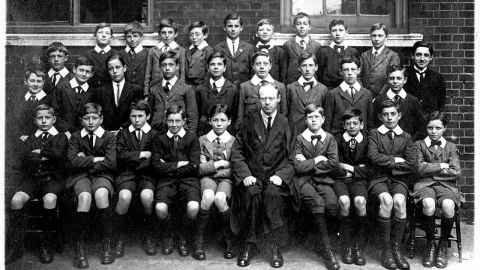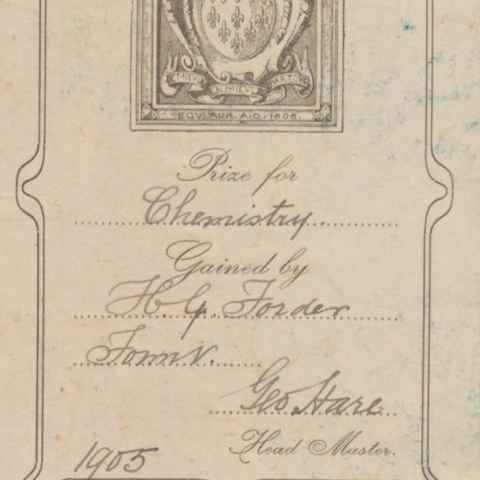Discovery in University library tells fuller story of noted maths professor
1 October 2020
The discovery of a mathematics professor’s prizes in the University of Auckland library has shone light on an early chapter in his life.

An early chapter in the life of Professor Henry G. Forder was uncovered recently during conservation work, buried in the rare book stacks in the Special Collections area of the University of Auckland Library.
Professor Forder, born in 1889, grew up in rural Norfolk, attending Paston Grammar School and Cambridge University before becoming a teacher and then moving to Auckland in 1934 to take up the Chair in Mathematics at what was then the Auckland University College. Professor Forder and wife Dorothy donated most of his book collection to the Science Library in 1974.
He died in Auckland in 1981, but his reputation as a leading mathematician is recognised in the biennial Forder Lectureship. The Forder Collection has been housed in Special Collections in Libraries and Learning Services, Te Tumu Herenga since 2002.
Although this collection mostly comprises mathematics and scientific texts, we noticed a sub-set of novels, poetry anthologies, history books and philosophical treaties that seemed outliers. These included Character by Samuel Smiles, History of the French Revolution of 1848 by Alphonse de Lamartine, Principles of Political Economy by John Stuart Mill, Lay Sermons by Thomas Henry Huxley, The Essays of Elia by Charles Lamb, Poems by John Milton, Vanity Fair by William Thackeray and Oliver Cromwell by John Morley.
Closer inspection revealed a series of school prize bookplates showing these volumes were awarded to Henry G. Forder by Paston Grammar between 1903 and 1906.
Forder excelled in botany, religious knowledge, chemistry, general subjects, English, science and, not surprisingly, mathematics. Our initial assumption was that the school chose these august titles for the prize winner. Impressive reading for a youngster in a remote corner of East Anglia.
However, Forder’s obituary in the Bulletin of the London Mathematical Society suggests Forder chose the books himself; even more impressive.

Another fortuitous discovery was a 1917 class photograph of schoolteacher Forder with pupils at St Olave’s School in South London, tucked into a 1962 edition of Lie Algebras by Nathan Jacobson. St Olave’s was one of several schools Forder taught at in the 1910s and 1920s after he graduated from Cambridge. He had a reputation for being an inspiring teacher and this is captured in Forder’s Keats anthology which has the inscription ‘H.G. Forder, A mark of respect from his boys in ‘Upper Remove’ Christmas 1918’.
These finds confirm Forder’s reputation as an exceptional pupil who read widely, and as a gifted schoolteacher. These treasured possessions travelled with him to the other side of the world, and now offer researchers insights into the formative years of one of our most distinguished professors.
Ian Brailsford, Special Collections, Te Tumu Herenga